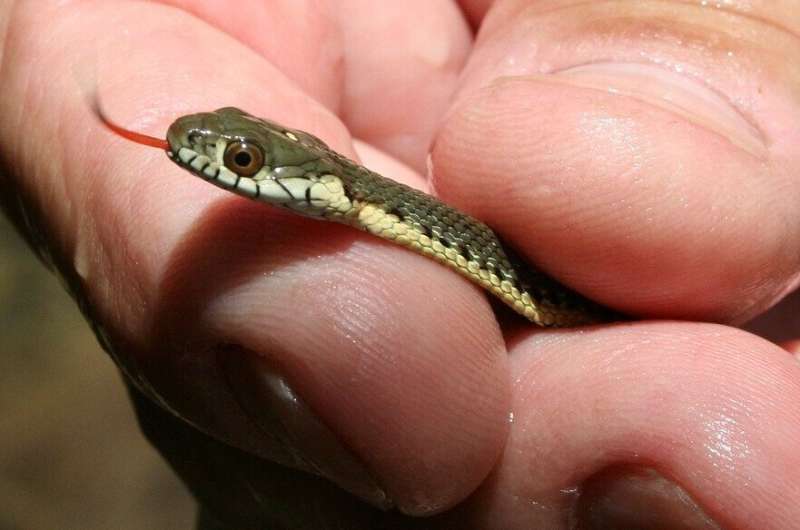April 4, 2024 report
This article has been reviewed according to Science X's editorial process and policies. Editors have highlighted the following attributes while ensuring the content's credibility:
fact-checked
peer-reviewed publication
trusted source
proofread
Some snakes show signs of self-recognition in olfactory tests

A trio of psychologists at Wilfrid Laurier University, in Canada, has found evidence that at least one type of snake may have self-recognition. In their study, published in Proceedings of the Royal Society B: Biological Sciences, Troy Freiburger, Noam Miller and Morgan Skinner used the olfactory sense rather than vision to test for self-recognition in two kinds of snakes.
Prior research has suggested that several types of animals have some degree of self-recognition. Testing involves putting a mark on an animal's face where they cannot see it and then allowing them to look in a mirror. If they react to the mark by touching, it, they are described as having self-recognition.
The research team notes that this procedure only works with species that use vision as a primary sense—that excludes others, including snakes. To test self-recognition in snakes, the researchers used the sense of smell—snakes rely very strongly on smell to find and capture prey.
To test snakes, the researchers chose two types that were easy to obtain—garters and ball pythons. They obtained 36 of the former and 18 of the latter and tested each of them. Testing consisted of collecting oil samples from each by rubbing a pad along their undersides and then presenting each with five scented pads: one that had the sample, another from the same sample that had been mixed with olive oil, one from a snake of a different species and one with just olive oil. With each presentation, the researchers noted how the snake under study reacted, focusing on tongue flicks.
In watching all the reactions, the research team found that the garter snakes flicked their tongues more when presented with their own scent and the sample with their modified scent. The ball pythons exhibited no differences in tongue flicking when presented with the samples.
The researchers suggest that increased tongue flicking when presented with their altered scent indicates a sign of self-recognition—they could tell something was off with how they were smelling. They noted also that garter snakes are much more social than ball pythons as a way to help explain the differences in reactions.
More information: Troy Freiburger et al, Olfactory self-recognition in two species of snake, Proceedings of the Royal Society B: Biological Sciences (2024). DOI: 10.1098/rspb.2024.0125
Journal information: Proceedings of the Royal Society B
© 2024 Science X Network




















